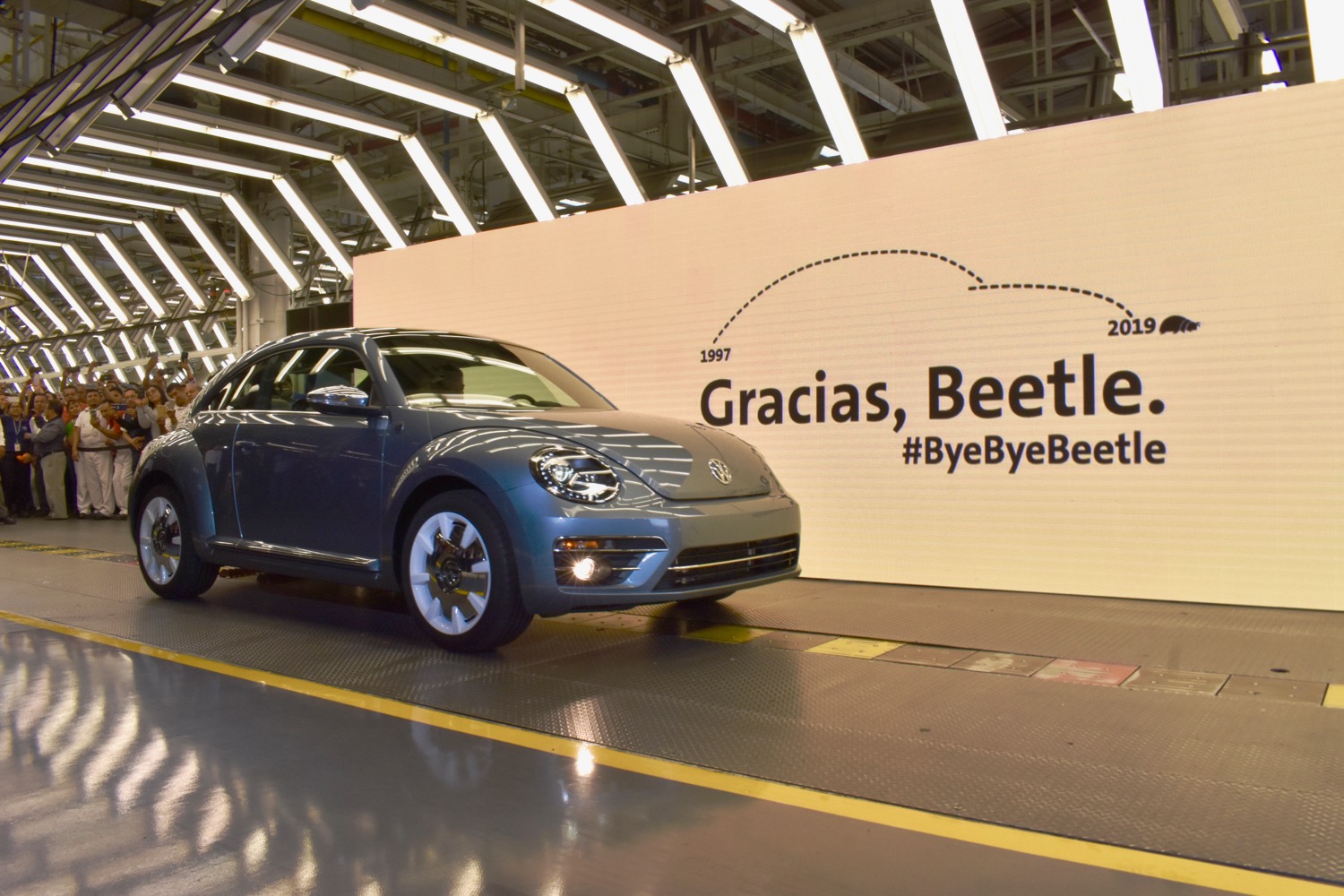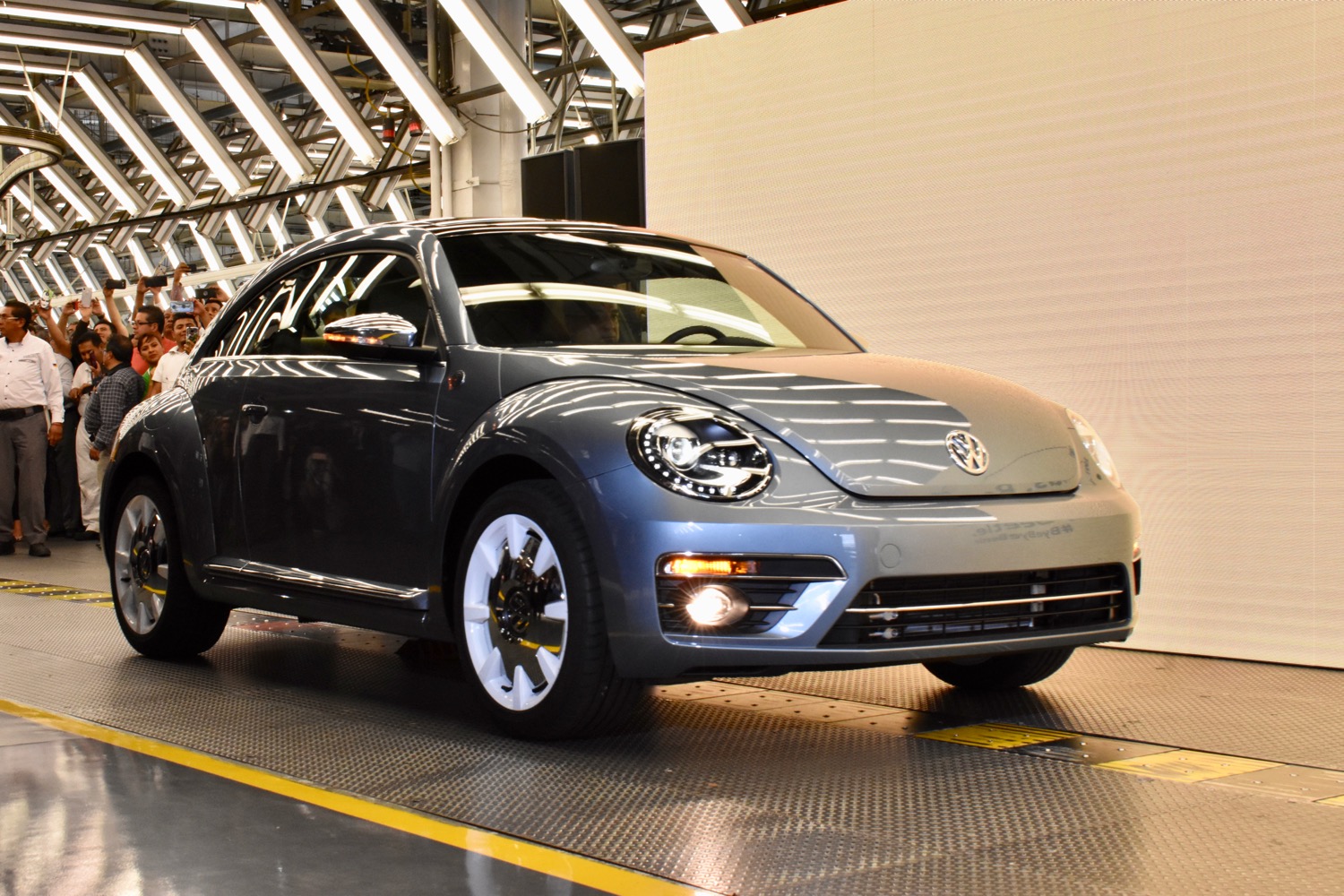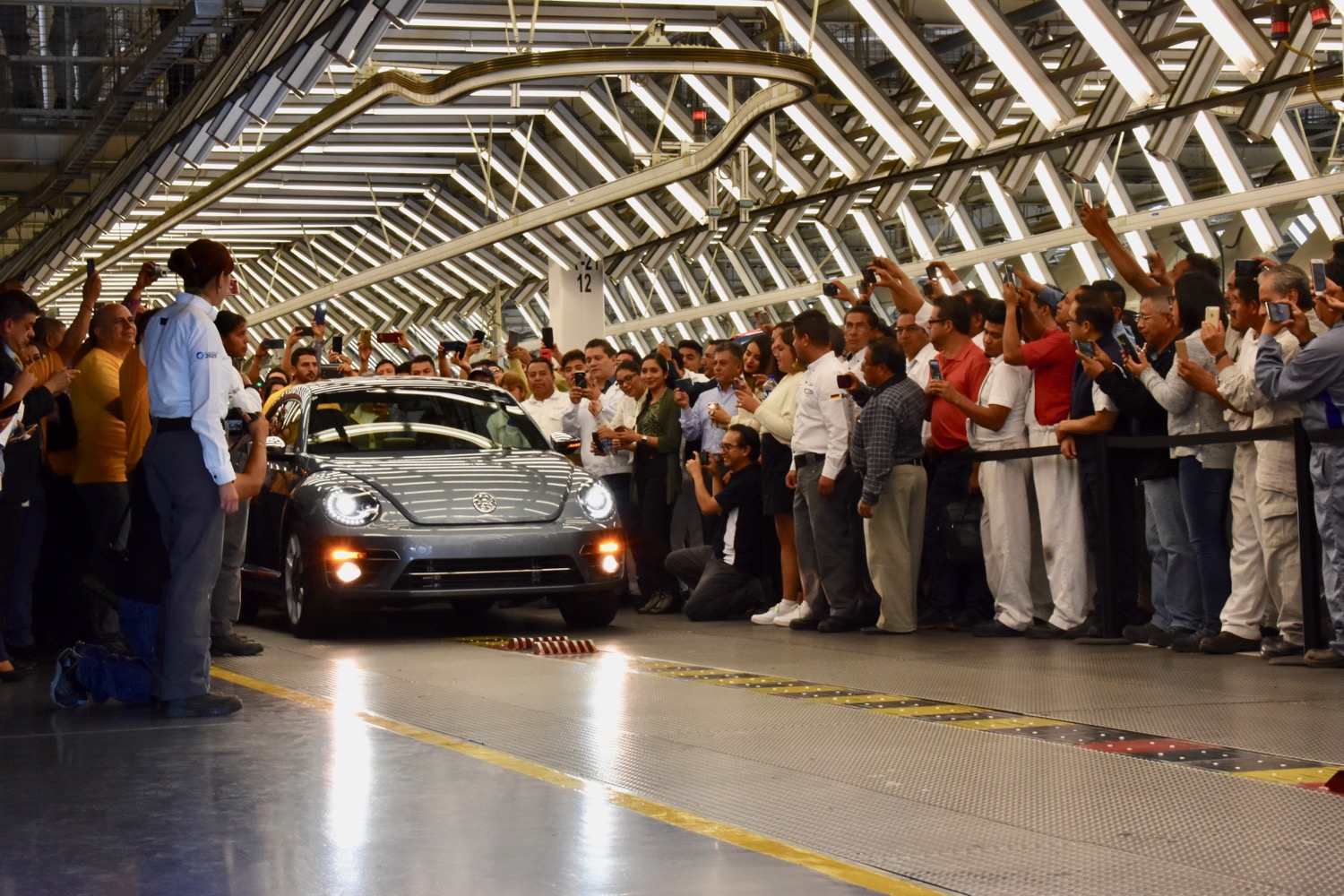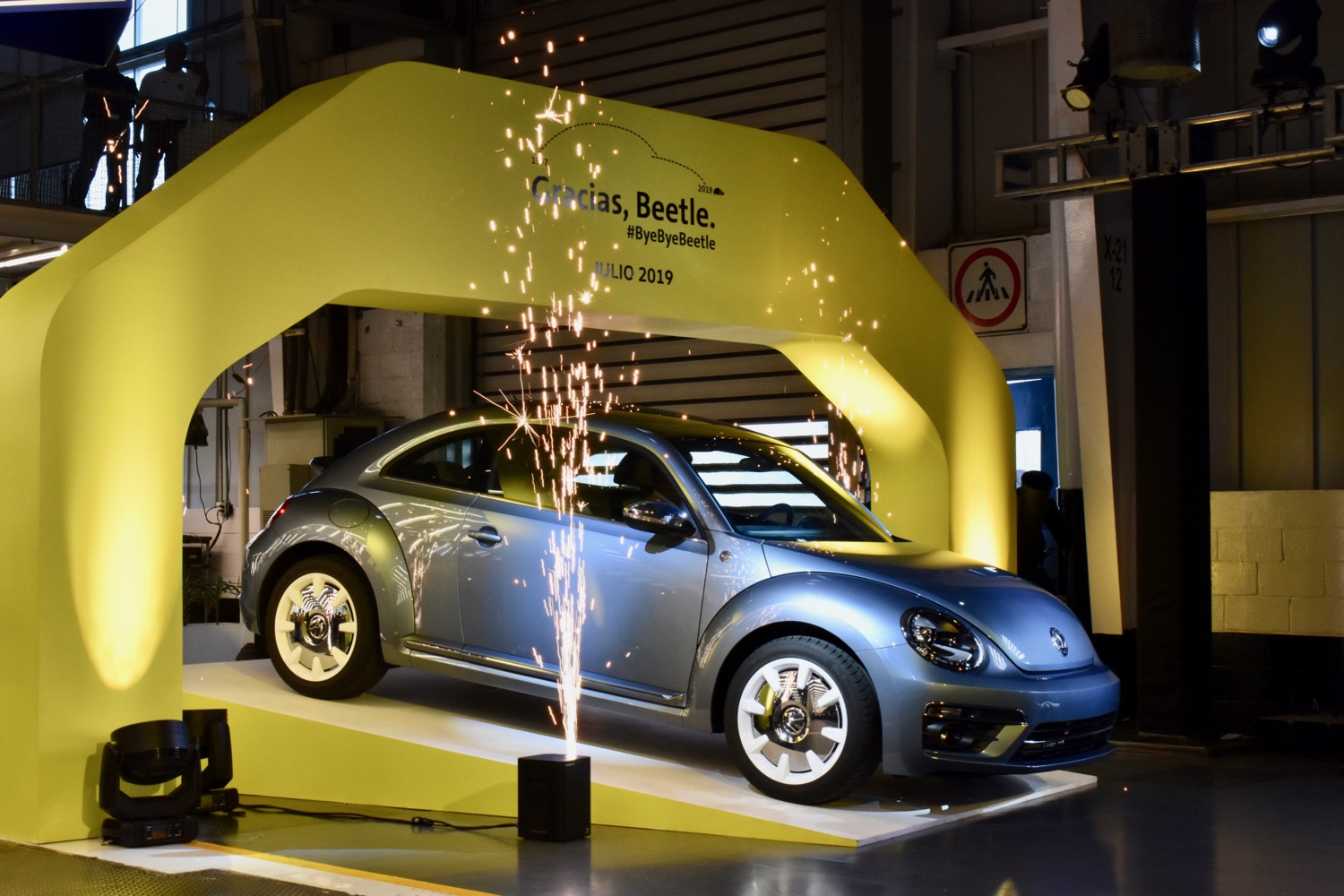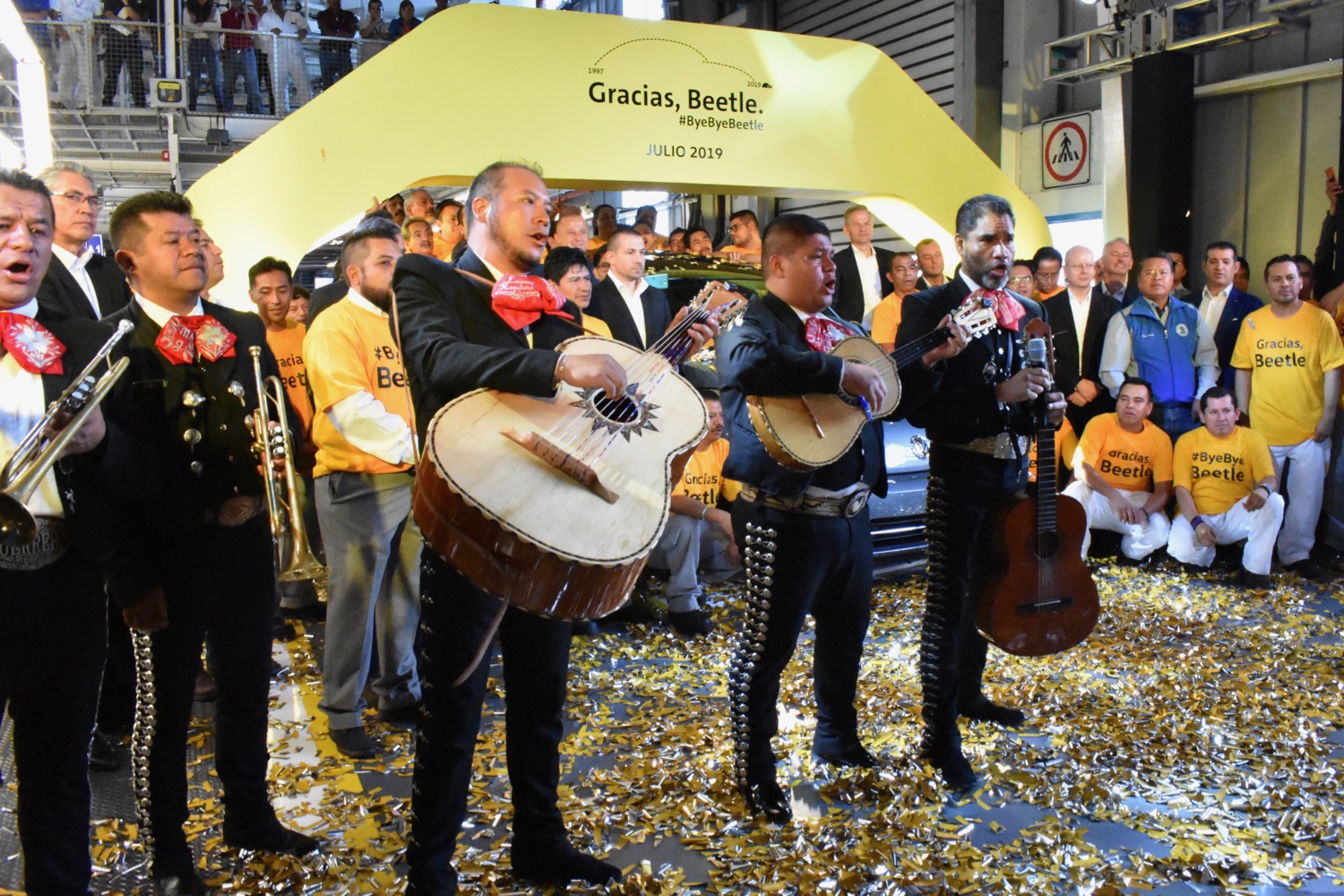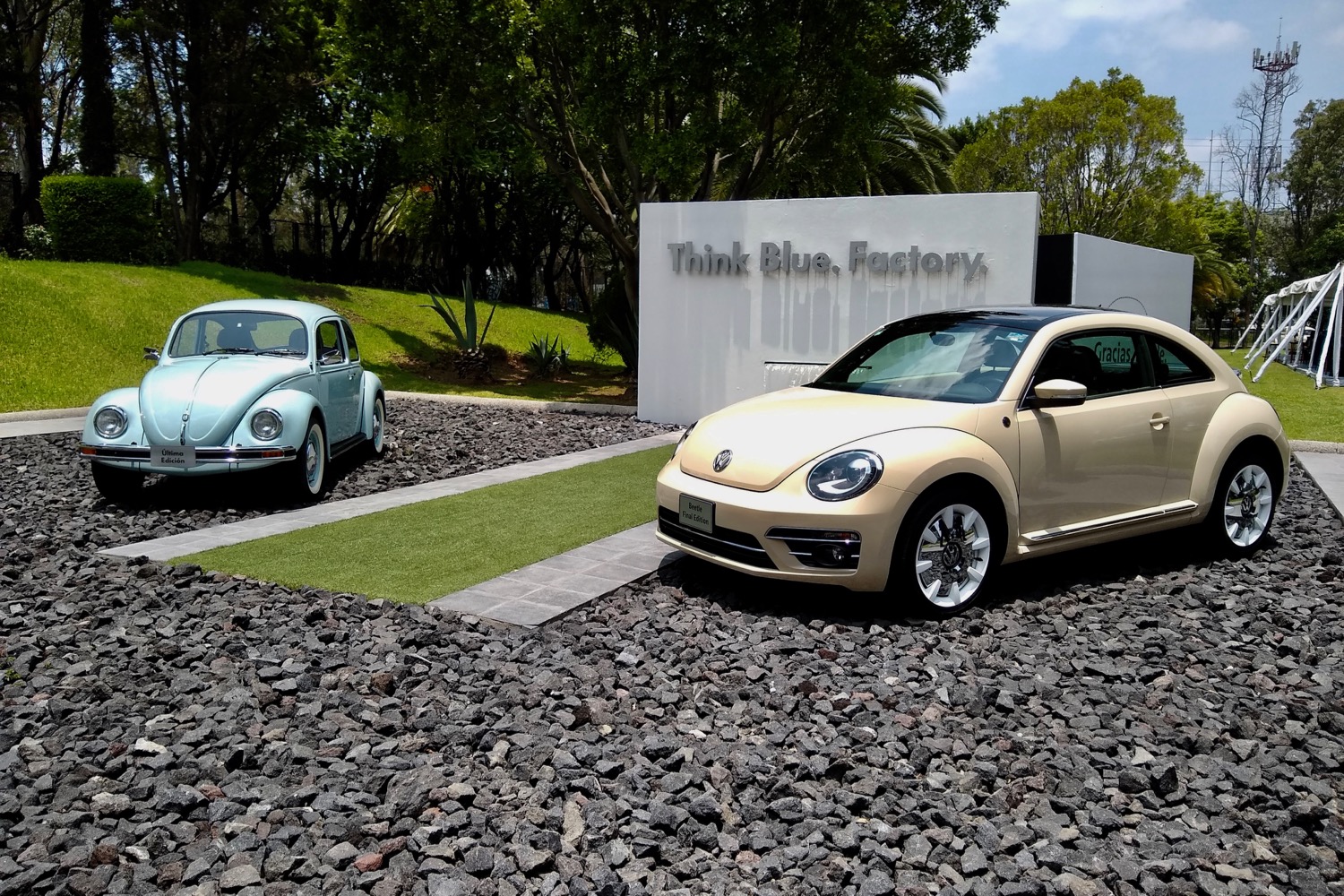Even a bug’s life is finite. After more than seven decades of production spanning three generations, the Volkswagen Beetle is finally heading to the big parking lot in the sky. The final Beetle rolled off the assembly line in Puebla, Mexico, surrounded by a throng of proud factory workers, and was serenaded by a Mariachi band. The factory will switch to building a new SUV for the North American market.
Despite the enthusiasm of the people that built it, and the owners that drive it, the Beetle’s death has been a long time coming. The current, third-generation Beetle has never been able to attract the same volume of sales as its predecessors. Also known as the Type 1, the original Beetle pivoted from Nazi propaganda tool to cultural icon. By the time the last one was built in 2003, Volkswagen had sold 21.5 million first-generation Beetles worldwide. The second-generation, which was launched as the New Beetle because the original was still being built in Mexico, helped kick off a wave of retro designs. Volkswagen sold 1.2 million of them between 1998 and 2010.
The third-generation Beetle was supposed to pick up where the New Beetle left off, combining classic Beetle styling with modern mechanicals. To broaden its appeal, Volkswagen made the third-generation model less cutesy than its predecessor. VW also launched a #PinkBeetle model, and took it rallycross racing, to raise its profile. But the third-generation Beetle didn’t have the novel rear-engine, air-cooled design of the original, and it never became a fashion icon like the New Beetle. Still, VW said more than 500,000 have been built since the final iteration of the Beetle launched in 2011 as a 2012 model. After driving all three generations of Beetle back to back on the grounds of the Puebla factory, it was obvious that the third generation was the best car. It just never had the charm of its predecessors.
Technology also had a hand in the Beetle’s demise. The Beetle production process is only 48 percent automated, compared to about 70 percent for other models built in Puebla, according to VW. On a tour of the factory, we definitely didn’t see as many robots on the Beetle production line as we did in other areas. Workers still hand-align sections of the body during assembly, something you won’t see being done with the Golfs, Jettas, and Tiguans that are also built in Puebla. That helps keep assembly-line workers employed, but it won’t make the accountants happy.
Volkswagen announced the end of Beetle production in late 2018, launching a special-edition model to commemorate the car’s demise. The last Beetle, a Denim Blue coupe, will be put on display at Volkswagen’s museum in Puebla. In a test of online sales, the last 65 cars to be sold to customers will be offered in Mexico through Amazon. The last Beetles built for the United States — a pair of Kings Red cars with custom dashboards, keys, and quilted seats, will join Volkswagen of America’s historic collection.

The Beetle may be gone, but VW isn’t done with retro designs. In 2022, the German automaker plans to launch a production version of the I.D. Buzz concept. It’s an all-electric homage to that other iconic Volkswagen — the Microbus. The I.D. Buzz will be one of a range of new electric Volkswagens arriving over the next decade. Maybe VW will eventually find room in its lineup for an electric Beetle, too.
Updated on July 10, 2019: Added photos and details from the Beetle end of production ceremony.
Editors' Recommendations
- Volkswagen ID.GTI concept is another icon reimagined as an EV
- Rumored PlayStation 5 photo off production line may confirm console’s size
- Official VW electric conversion updates the classic Beetle
